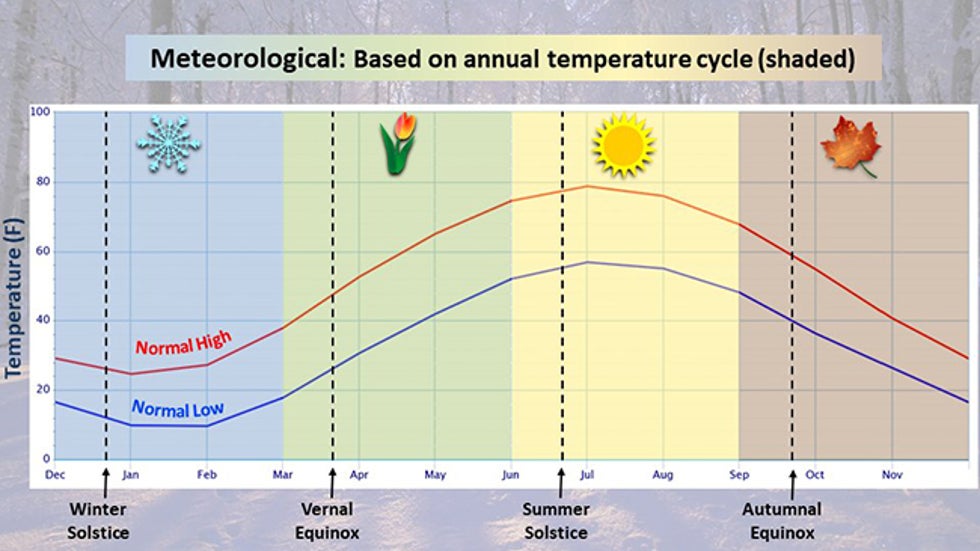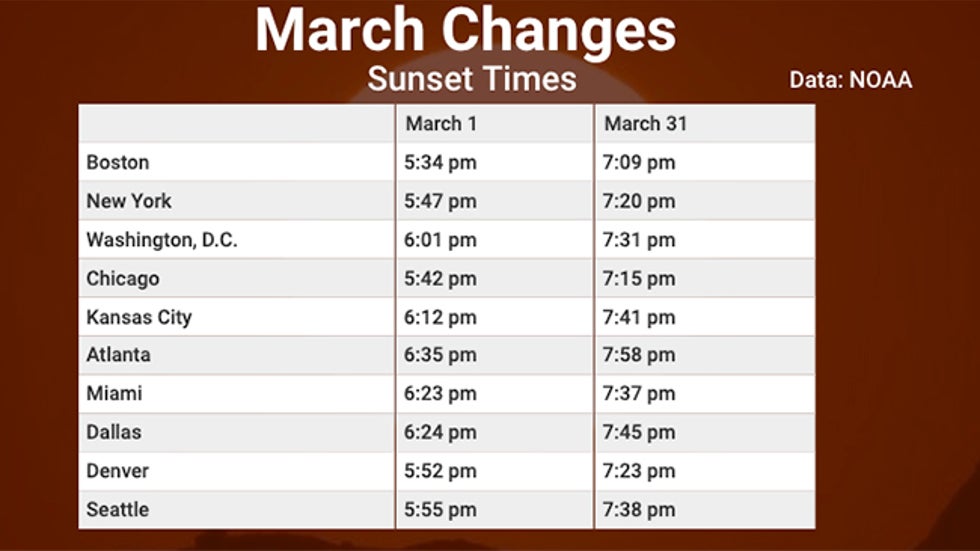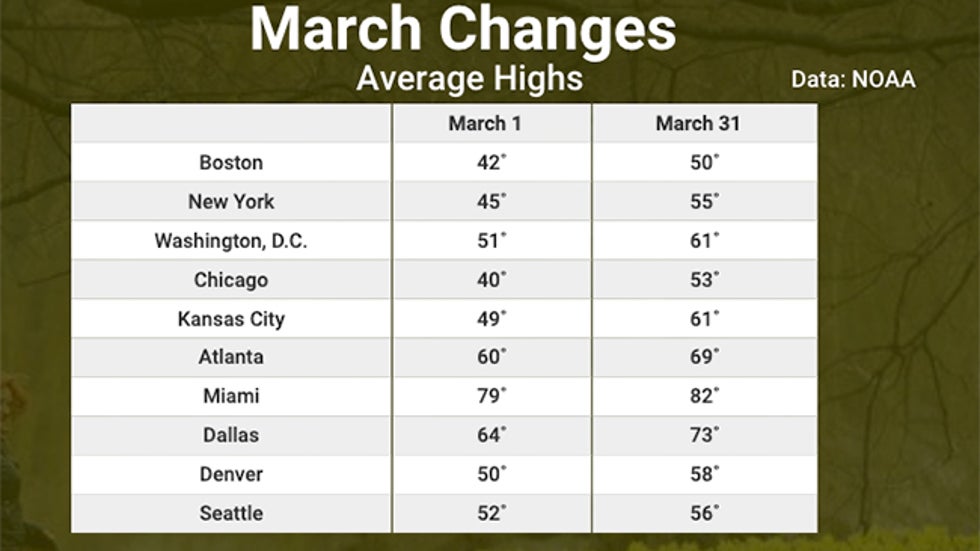Jonathan Erdman
Meteorological spring arrives Monday and while you may be itchy for warmer weather, you may wonder why this is happening weeks before the vernal equinox.
After a stretch of record-smashing cold and repeated rounds of snow in February, spring couldn't come soon enough for those impacted by crippling power and water outages in Texas and surrounding states.
It turns out, spring is already here, at least according to meteorologists.
The arrival of spring you've probably heard about before is known as the vernal equinox.
That's the moment in time when the sun's most direct rays are shining on the equator. In 2021, the vernal equinox will occur on Saturday, March 20, at 5:37 a.m. EDT. If you're an early rise on a weekend morning, you can observe that this year.
Its counterpart in fall, the autumnal equinox, and also the summer and winter solstices, all occur in late September, June and December, respectively, due to the tilt of the Earth's axis as it revolves around the sun.
This changing sun angle through the year is why we have so-called astronomical seasons.
(MORE: March Temperature Outlook)
 The orientation of the Earth relative to the sun at the northern hemisphere's vernal (spring) equinox, summer solstice, autumnal equinox and winter solstice.
The orientation of the Earth relative to the sun at the northern hemisphere's vernal (spring) equinox, summer solstice, autumnal equinox and winter solstice.Why do meteorologists stray from those seemingly concrete definitions?
It all has to do with temperatures.
When you examine average daily high and low temperatures through the year, you'll quickly notice a pattern.
The coldest three months of the year in the Northern Hemisphere are usually from the beginning of December through the end of February, while the warmest three months are typically from the beginning of June through the end of August.
These nice, clean, three-month buckets are known as meteorological winter and summer, respectively.
And these clean three-month temperature buckets don't line up nearly as well with the astronomical seasons, for example late December through late March.
 A generic, sample trace of average high (red) and low (blue) daily temperatures the year. The coldest three months of the year are known as meteorological winter. The hottest such three months are meteorological summer. The transition between those two are meteorological spring and fall.
A generic, sample trace of average high (red) and low (blue) daily temperatures the year. The coldest three months of the year are known as meteorological winter. The hottest such three months are meteorological summer. The transition between those two are meteorological spring and fall.In fact, Alaska-based climatologist Brian Brettschneider calculated that the Dec. 1 - Feb. 28 meteorological winter is a better fit to the coldest time of year in most of the United States and Canada.
In an analysis of dozens of U.S. cities, Brettschneider found only Honolulu, Hawaii, had its coldest 90-day stretch extend deep into March.
For those that live in the northern U.S., this makes sense.
It seems a little silly when we say "winter is here" just days before Christmas, when many parts of the north have already had at least one significant snowfall or cold snap.
Meteorological spring - March 1 through May 31 - is the transition between the three coldest and three warmest months of the year.
Another advantage to meteorological seasons is the ease of calculating seasonal statistics, since every meteorological season starts on the first of the month.
A March of Increasing Daylight, Temperatures
Most of the U.S. will pick up a full hour of evening daylight when daylight saving time arrives on March 14.
Even if there wasn't daylight saving time, most areas in the northern U.S. would gain an extra 30-45 minutes of sunlight in the evening by the end of March. More southern locales would typically only pick up 15 to 30 minutes of additional evening daylight during the month, if our clocks didn't spring forward.
 Sunset times on March 1 (prior to daylight saving time) and March 31 (after daylight saving time) in 2021 for various U.S. cities.
Sunset times on March 1 (prior to daylight saving time) and March 31 (after daylight saving time) in 2021 for various U.S. cities.While March has a well-earned stormy reputation, including winter storms in the West and northern U.S., with the sun gradually shining higher in the sky, average high temperatures typically rise about 10 degrees in the Midwest, Northeast and Plains by month's end.
(MORE: When to Expect the First 70s and 80s of Spring Where You Live)
 Daily average high temperatures on March 1 and March 31 in several U.S. cities. The largest change in temperatures during the month occur in the northern U.S., particularly the Plains and Midwest.
Daily average high temperatures on March 1 and March 31 in several U.S. cities. The largest change in temperatures during the month occur in the northern U.S., particularly the Plains and Midwest.The Weather Company’s primary journalistic mission is to report on breaking weather news, the environment and the importance of science to our lives. This story does not necessarily represent the position of our parent company, IBM.
The Weather Company’s primary journalistic mission is to report on breaking weather news, the environment and the importance of science to our lives. This story does not necessarily represent the position of our parent company, IBM.

No comments:
Post a Comment